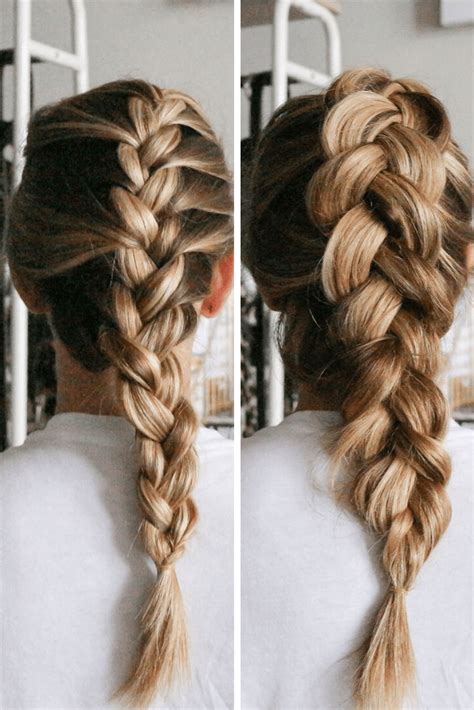French vs. Dutch Braid: The Ultimate Guide to Crowned Glory

In the realm of hair braiding, two iconic styles reign supreme: the French braid and the Dutch braid. Both intricate and visually stunning, these braids have captured the hearts of countless hair enthusiasts worldwide. While they share similarities, subtle differences set them apart, each offering its own charm and versatility.
Origins and History
- French Braid: Originating in France, the French braid emerged during the Middle Ages and gained popularity among women of all ages. Its elegance and practicality made it a go-to choice for everyday styling and formal occasions.
- Dutch Braid: Also known as the reverse or inside-out braid, the Dutch braid was first introduced in the Netherlands in the 17th century. It became a popular symbol of Dutch culture and is often used in traditional costumes.
Technique
French Braid:
- Divide your hair into three equal sections at the crown.
- Cross the right section over the middle section and then the left section over the new middle section.
- Take a small section of hair from the left and add it to the left strand; cross it over the middle section.
- Repeat step 3 on the right side.
- Continue alternating sides, adding hair as you go, until all hair is incorporated.
- Secure the end with a hair elastic.
Dutch Braid:
- Divide your hair into three equal sections at the crown.
- Cross the right section under the middle section and then the left section under the new middle section.
- Take a small section of hair from the left and add it to the left strand; cross it under the middle section.
- Repeat step 3 on the right side.
- Continue alternating sides, adding hair as you go, until all hair is incorporated.
- Secure the end with a hair elastic.
Key Differences
| Feature | French Braid | Dutch Braid |
|---|---|---|
| Placement | Sits on top of the head | Sits closer to the scalp |
| Volume | Creates a raised, voluminous braid | Creates a flatter, tighter braid |
| Appearance | Elegantly woven | Boldly raised with visible crossing strands |
| Complexity | Requires more tension and precision | Easier to execute for beginners |
Pain Points and Motivations
-
Pain Points:
- French braids can cause scalp tension and discomfort if braided too tightly.
- Dutch braids may be more difficult to remove due to the way the strands are interwoven.
-
Motivations:
- French braids offer a classic and elegant look for any occasion.
- Dutch braids can create a bold and unique hairstyle that stands out.
Applications and Versatility
French and Dutch braids are versatile hairstyles that can be adapted to suit various hair types, lengths, and occasions.
- Everyday Styling: Both braids are practical and stylish for everyday wear.
- Formal Events: French braids add a touch of sophistication to formal attire, while Dutch braids provide a more dramatic look.
- Athletic Activities: Braids keep hair out of the way during sports and other physical activities.
- Hair Accessories: Braid cuffs, ribbons, and other accessories can enhance the beauty of both French and Dutch braids.
Variations and Inspirations
The creativity of hair stylists knows no bounds, and there are countless variations of French and Dutch braids. Experiment with different techniques such as:
- Half-up Braids: Create a partial braid on the top of your head, leaving the rest of your hair loose.
- Side Braids: Braid your hair to one side for a bohemian or asymmetrical look.
- Multiple Braids: Intertwine multiple braids together for a more complex and eye-catching hairstyle.
- Fishtail Braid: A unique variation that resembles a fish’s tail, created by interweaving small strands of hair.
FAQs
1. Which braid is better for thick hair?
Dutch braid
2. Which braid is more comfortable to sleep in?
French braid
3. Can French and Dutch braids be combined?
Yes, you can create a hybrid braid that incorporates elements of both techniques.
4. Do French and Dutch braids damage hair?
If braided too tightly or left in for extended periods, any braid can cause breakage.
5. How often should I wash my hair if I wear braids?
Every 2-3 days, as braids can trap oil and dirt.
6. How long will my braid last?
Depending on hair type and technique, a braid can last for 1-3 days.
7. Can I braid my own hair?
With practice, yes. There are many tutorials available online and in books.
8. What are some creative braid ideas?
* Boho-chic braid with feathers
* Dutch braid crown with flowers
* Neon-colored fishtail braids
* Intricate braided updo with hair accessories
